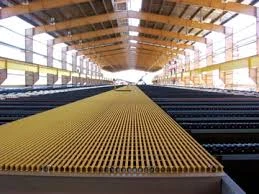
-
 Afrikaans
Afrikaans -
 Albanian
Albanian -
 Amharic
Amharic -
 Arabic
Arabic -
 Armenian
Armenian -
 Azerbaijani
Azerbaijani -
 Basque
Basque -
 Belarusian
Belarusian -
 Bengali
Bengali -
 Bosnian
Bosnian -
 Bulgarian
Bulgarian -
 Catalan
Catalan -
 Cebuano
Cebuano -
 China
China -
 China (Taiwan)
China (Taiwan) -
 Corsican
Corsican -
 Croatian
Croatian -
 Czech
Czech -
 Danish
Danish -
 Dutch
Dutch -
 English
English -
 Esperanto
Esperanto -
 Estonian
Estonian -
 Finnish
Finnish -
 French
French -
 Frisian
Frisian -
 Galician
Galician -
 Georgian
Georgian -
 German
German -
 Greek
Greek -
 Gujarati
Gujarati -
 Haitian Creole
Haitian Creole -
 hausa
hausa -
 hawaiian
hawaiian -
 Hebrew
Hebrew -
 Hindi
Hindi -
 Miao
Miao -
 Hungarian
Hungarian -
 Icelandic
Icelandic -
 igbo
igbo -
 Indonesian
Indonesian -
 irish
irish -
 Italian
Italian -
 Japanese
Japanese -
 Javanese
Javanese -
 Kannada
Kannada -
 kazakh
kazakh -
 Khmer
Khmer -
 Rwandese
Rwandese -
 Korean
Korean -
 Kurdish
Kurdish -
 Kyrgyz
Kyrgyz -
 Lao
Lao -
 Latin
Latin -
 Latvian
Latvian -
 Lithuanian
Lithuanian -
 Luxembourgish
Luxembourgish -
 Macedonian
Macedonian -
 Malgashi
Malgashi -
 Malay
Malay -
 Malayalam
Malayalam -
 Maltese
Maltese -
 Maori
Maori -
 Marathi
Marathi -
 Mongolian
Mongolian -
 Myanmar
Myanmar -
 Nepali
Nepali -
 Norwegian
Norwegian -
 Norwegian
Norwegian -
 Occitan
Occitan -
 Pashto
Pashto -
 Persian
Persian -
 Polish
Polish -
 Portuguese
Portuguese -
 Punjabi
Punjabi -
 Romanian
Romanian -
 Russian
Russian -
 Samoan
Samoan -
 Scottish Gaelic
Scottish Gaelic -
 Serbian
Serbian -
 Sesotho
Sesotho -
 Shona
Shona -
 Sindhi
Sindhi -
 Sinhala
Sinhala -
 Slovak
Slovak -
 Slovenian
Slovenian -
 Somali
Somali -
 Spanish
Spanish -
 Sundanese
Sundanese -
 Swahili
Swahili -
 Swedish
Swedish -
 Tagalog
Tagalog -
 Tajik
Tajik -
 Tamil
Tamil -
 Tatar
Tatar -
 Telugu
Telugu -
 Thai
Thai -
 Turkish
Turkish -
 Turkmen
Turkmen -
 Ukrainian
Ukrainian -
 Urdu
Urdu -
 Uighur
Uighur -
 Uzbek
Uzbek -
 Vietnamese
Vietnamese -
 Welsh
Welsh -
 Bantu
Bantu -
 Yiddish
Yiddish -
 Yoruba
Yoruba -
 Zulu
Zulu
exploring efficient methods for streamlining frp laundering
Exploring Efficient Methods for Streamlining FRP Laundering
FRP (Fiber Reinforced Polymer) composite materials have gained significant traction in various industries due to their exceptional strength-to-weight ratio, corrosion resistance, and versatility. However, the laundering process of FRP materials presents unique challenges that can hinder efficiency and effectiveness. Streamlining these laundering methods is crucial for maximizing performance, extending the life of FRP products, and minimizing environmental impact.
Exploring Efficient Methods for Streamlining FRP Laundering
Furthermore, optimizing cleaning solutions and chemicals can enhance the laundering process. The use of biodegradable and eco-friendly detergents not only promotes sustainability but also ensures that the cleaning agents do not adversely affect the integrity of the FRP material. Research into the compatibility of various cleaning agents with different types of FRP can lead to the development of customized solutions that deliver superior cleaning results while being gentle on the material.
exploring efficient methods for streamlining frp laundering

Another efficient method involves the establishment of standardized laundering protocols. By creating best practice guides that encompass temperature settings, dwell times, and mechanical action parameters, organizations can ensure consistency in the laundering process. This not only improves the cleaning results but also allows for training personnel more effectively, reducing the learning curve and ensuring that employees adhere to optimal practices.
Moreover, feedback loops can be established to track the effectiveness of laundering processes. By collecting data on cleaning performance, material degradation, and overall efficiency, companies can identify areas for improvement and develop continual enhancement strategies. This data-driven approach will enable organizations to adapt and refine their laundering methods, leading to increased efficiency and reduced costs over time.
Lastly, investing in staff training and awareness can significantly impact the efficiency of FRP laundering. Employees who are well-versed in the properties of FRP materials and the best laundering practices are more likely to ensure optimal results. Continuous education on evolving technologies and methodologies will empower staff to implement improvements proactively.
In conclusion, streamlining FRP laundering processes requires a multifaceted approach that includes advanced cleaning technologies, optimized cleaning solutions, standardized protocols, data-driven feedback mechanisms, and comprehensive staff training. By focusing on these areas, organizations can achieve more efficient, effective, and environmentally responsible laundering practices.
Latest news
-
Exploring the Benefits of Top Hammer Drifter Rods for Enhanced Drilling PerformanceNewsJun.10,2025
-
High-Precision Fiberglass Winding Machine for GRP/FRP Pipe Production – Reliable & Efficient SolutionsNewsJun.10,2025
-
FRP Pipes & Fittings for Shipbuilding - Corrosion-Resistant & LightweightNewsJun.09,2025
-
Premium FRP Flooring Solutions Durable & Slip-ResistantNewsJun.09,2025
-
Premium Fiberglass Rectangular Tanks Durable & Lightweight SolutionNewsJun.09,2025
-
Tapered Drill String Design Guide Durable Performance & UsesNewsJun.09,2025









